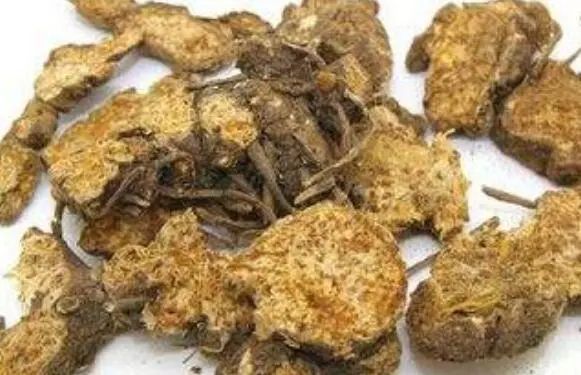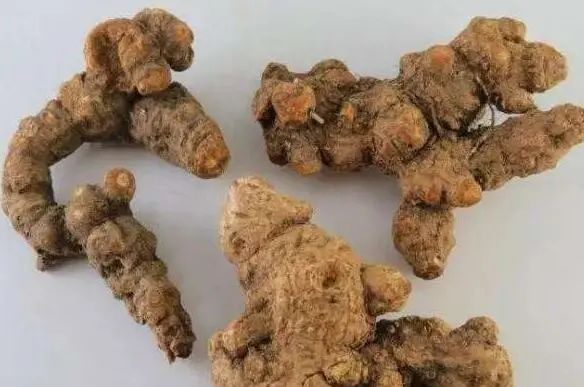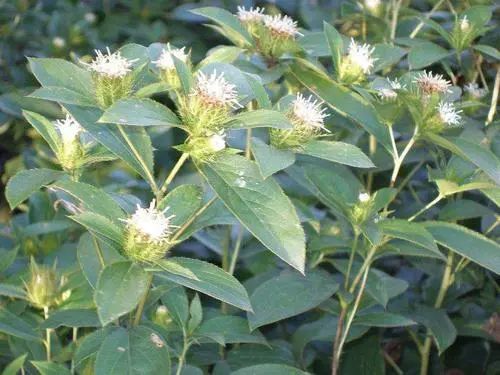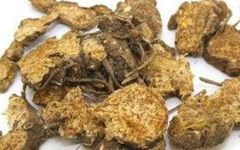————————————————————————————————————————————————————————————————–
Cang Zhu (Atractylodes) is a plant from the Asteraceae family, recognized as a wild medicinal herb. It is typically harvested in the spring and autumn seasons. The underground rhizome is cleaned, sliced, and dried for medicinal use. In the family of traditional Chinese medicine (TCM), it is known as Cang Zhu, a herb that strengthens the spleen, dries dampness, and alleviates depression. Clinically, it is used to treat various common ailments with particularly good results. Below is a detailed introduction to the efficacy and medicinal value of Cang Zhu, which users can refer to after consumption.

The Efficacy and Functions of Cang Zhu
1. Enhancing Gastrointestinal Function
Cang Zhu has a significantly positive effect on human gastrointestinal health. Its medicinal components can prevent smooth muscle and small intestine spasms, as well as protect the gastrointestinal mucosa, reducing damage from drugs and viruses. It can alleviate common conditions such as enteritis, gastritis, and gastrointestinal dysfunction.
2. Anti-Ulcer Properties
Ulcers are a common disease in humans, often caused by damage to the mucosa from bacteria or viruses. Cang Zhu exhibits notable anti-inflammatory and antiviral properties and can inhibit gastric acid secretion. It provides clear relief for gastric ulcers and contains volatile oils that can suppress the secretion of salivary and intestinal glands, also alleviating duodenal ulcers and oral ulcers.

The Medicinal Value of Cang Zhu
1. Treating Loss of Appetite
Cang Zhu is a commonly used herb in TCM for treating loss of appetite. To prepare it, 10 grams of Cang Zhu and an appropriate amount of water are needed. After cleaning the Cang Zhu, it is boiled with water. Once boiling, it is simmered over medium heat for 30 minutes. The decoction should be consumed in two doses within a day. After three consecutive days of use, symptoms of loss of appetite can significantly improve. Additionally, it can alleviate abdominal distension and diarrhea due to spleen deficiency.
2. Treating Exogenous Wind-Cold
Exogenous wind-cold is a common ailment where patients may experience symptoms such as sneezing, runny nose, fever, and cold pain in the limbs. Cang Zhu can be used for treatment by combining it with licorice, Fang Feng (Siler), scallions, and ginger, boiled together with water. Most patients experience sweating and relief from discomfort after taking the medicine.
Aliases: Chi Zhu, Qing Zhu Cai
Cang Zhu refers to the dried rhizome of the Atractylodes macrocephala or Atractylodes lancea, harvested in spring and autumn, cleaned of soil, dried, and the fibrous roots removed. It is commonly prepared as a decoction, extract, or in pill and powder form. Its properties are warm, with a pungent and bitter taste; it enters the spleen, stomach, and liver meridians.
Functions: It is primarily used to dry dampness, strengthen the spleen, dispel wind, and scatter cold. It is indicated for abdominal distension, diarrhea, edema, rheumatic pain, wind-cold common cold, and night blindness.
Contraindications: It should not be used by those with yin deficiency and excess heat, or those with qi deficiency and excessive sweating.
Summary from Ancient Texts:
From the “Compendium of Materia Medica”: Treats damp phlegm retention, or blood stasis forming cysts, and spleen dampness leading to downward flow, turbid discharge, and slippery diarrhea.
From the “Materia Medica Seeking Origins”: Stops watery diarrhea, food injury summer diarrhea, and spleen dampness with blood.
Selected Formulas:
Formula 1
Ingredients: Cang Zhu 10-15 grams
Preparation: Boil Cang Zhu with water over high heat, then simmer for 20 minutes, strain to obtain 300 ml of medicinal liquid.
Dosage: 1 dose daily, taken in small amounts frequently, with a course of 3 months.
Function: Suitable for gastric prolapse.
Formula 2
Ingredients: 1 piece of Cang Zhu, 5-7 moxa cones.
Preparation: Shape Cang Zhu into a cone, pierce several small holes, insert into the external ear canal, then place a moxa cone on top and light it.
Dosage: Once daily or every other day, with a course of 10 treatments.
Function: Suitable for neurogenic tinnitus.
Note: This method has certain risks and should be performed under medical guidance.
Formula 3
Ingredients: Cang Zhu, Ban Xia (Pinellia), Fu Ling (Poria), Hou Po (Magnolia Bark), Bai Jie Zi (White Mustard Seed), Lai Fu Zi (Radish Seed) each 10 grams, Chen Pi (Tangerine Peel) 6 grams, Zhi Gan Cao (Honey-Fried Licorice) 5 grams.
Preparation: Boil the above herbs in water to obtain the decoction.
Dosage: 1 dose daily, taken in 2 portions.
Function: This formula can strengthen the spleen, dry dampness, transform phlegm, and stop cough, suitable for alleviating phlegm-damp obstructing the lungs in chronic obstructive pulmonary disease.
Formula 4
Ingredients: Cang Zhu, Gao Ben (Ligusticum), Chao Shen Qu (Fermented Barley), Gui Zhi (Cinnamon Twig), Fu Ling, Ze Xie (Alisma) each 10 grams, Chao Mai Ya (Fried Barley) 15 grams, Chai Hu (Bupleurum) 9 grams, Chuan Xiong (Szechuan Lovage) 7 grams, Zhi Gan Cao 4 grams.
Preparation: Boil the above herbs in water to obtain the decoction.
Dosage: 1 dose daily, taken in 4 portions warm.
Function: Raises yang, transforms qi, harmonizes the stomach, and aids movement, suitable for stomach qi stagnation, dampness retention, failure of clear yang to rise, and sinking of middle qi.
Formula 5
Ingredients: Cang Zhu, Chai Hu, Xiang Fu (Cyperus), Yu Jin (Curcuma), Zhi Qiao (Bitter Orange), Ban Xia, Yuan Hu (Corydalis), Jian Qu (Fermented Wheat) each 10 grams, Bai Shao (White Peony) 15 grams, Zhi Chuan Xiong, Zhi Zhi Zi (Gardenia) each 8 grams, Zhi Gan Cao 5 grams.
Preparation: Boil the above herbs in water to obtain the decoction.
Dosage: 1 dose daily, taken in 2 portions.
Function: Soothes the liver, harmonizes the stomach, regulates qi, and alleviates pain, suitable for chronic superficial gastritis, recurrent abdominal pain, exacerbated after eating, chest tightness, irritability, acid reflux, loss of appetite, and constipation.
Formula 6
Ingredients: Cang Zhu, Xiang Fu, Chuan Xiong, Shen Qu, Zhi Zi each in equal parts.
Preparation: Grind the above herbs into a fine powder, roll into pills the size of mung beans.
Dosage: 6-9 grams each time, taken with warm water.
Function: Moves qi and relieves depression, effective for acid reflux, bloating, chest and abdominal distension, and indigestion caused by qi, food, heat, and dampness.
Formula 7
Ingredients: Cang Zhu, Chen Pi, Zhi Qiao, Ma Huang (Ephedra, root removed) each 720 grams, Jie Geng (Platycodon, root removed), Hou Po (coarse skin removed) each 200 grams, Gan Jiang (Dried Ginger) 120 grams, Bai Zhi (Angelica Dahurica), Chuan Xiong, Zhi Gan Cao, Yun Ling (Poria), Dang Gui (Angelica Sinensis), Ban Xia (washed), Rou Gui (Cinnamon, coarse skin removed) each 90 grams.
Preparation: Except for Rou Gui and Zhi Qiao, crush the other herbs into a coarse powder, stir-fry over low heat until they change color, cool, then add Rou Gui, and finally Zhi Qiao, mix well.
Dosage: 9 grams each time, taken twice daily.
Function: Suitable for internal heat and external injury causing stagnation, abdominal pain, and loss of appetite.
Formula 8
Ingredients: Cang Zhu, Bai Zhu (Atractylodes), Fu Ling, Bian Dou (Lima Bean), Chen Pi, Ban Xia each 10 grams, Dang Shen (Codonopsis) 15 grams, Huai Shan (Chinese Yam) 12 grams, Sha Ren (Amomum) 8 grams (ground into powder and mixed into the decoction), Mu Xiang (Saussurea), Gan Cao each 7 grams.
Preparation: Boil the above herbs in water to obtain the decoction.
Dosage: 1 dose daily, taken in 2 portions.
Function: This formula can strengthen the spleen, benefit the stomach, and tonify qi, suitable for diarrhea caused by spleen and stomach qi deficiency.
Formula 9
Ingredients: Cang Zhu, sesame oil in appropriate amounts.
Preparation: Dry and grind Cang Zhu into a fine powder, mix with sesame oil to form a thin paste.
Dosage: Apply the paste to the burn area three times daily.
Function: Suitable for burns and scalds.
Formula 10
Ingredients: Cang Zhu, Wu Zhu Yu (Evodia) each 15 grams, Ding Xiang (Clove) 3 grams, Hu Jiao (Pepper) 15 grains.
Preparation: Dry and grind the above four ingredients into a fine powder.
Dosage: Take 1-3 grams of the powder mixed with cooking oil, apply to the navel, cover with sterile gauze, and secure with adhesive tape, changing the dressing once daily, generally healing in 1-2 applications.
Function: Warms the middle, dries dampness, suitable for abdominal distension and diarrhea due to cold damp obstruction.
Recommendation: For more folk TCM health information, long-press the finger to scan the QR code below to learn more↓↓↓↓↓


The knowledge left by our ancestors is often simple yet practical!
If you find it useful, save it and share it with your friends; it can truly help everyone!
Disclaimer: This article is reproduced from the internet and published materials. If there is any infringement, please contact us for removal. The various prescriptions and remedies mentioned are for informational sharing only and do not constitute medical advice, recommendations, or guidance. Please use them under the guidance of a physician.

